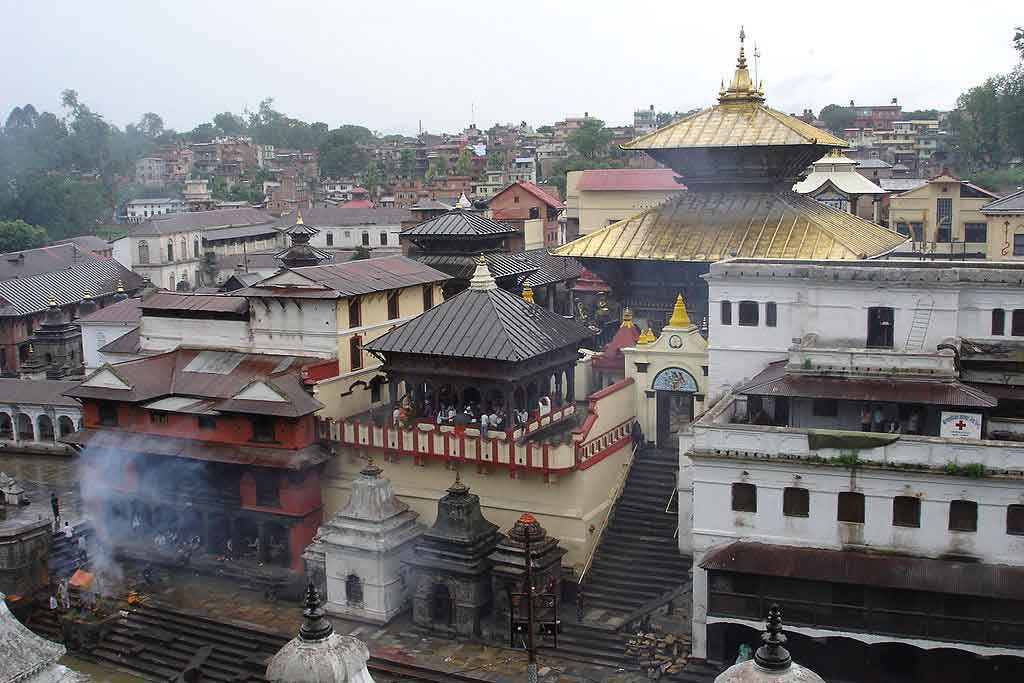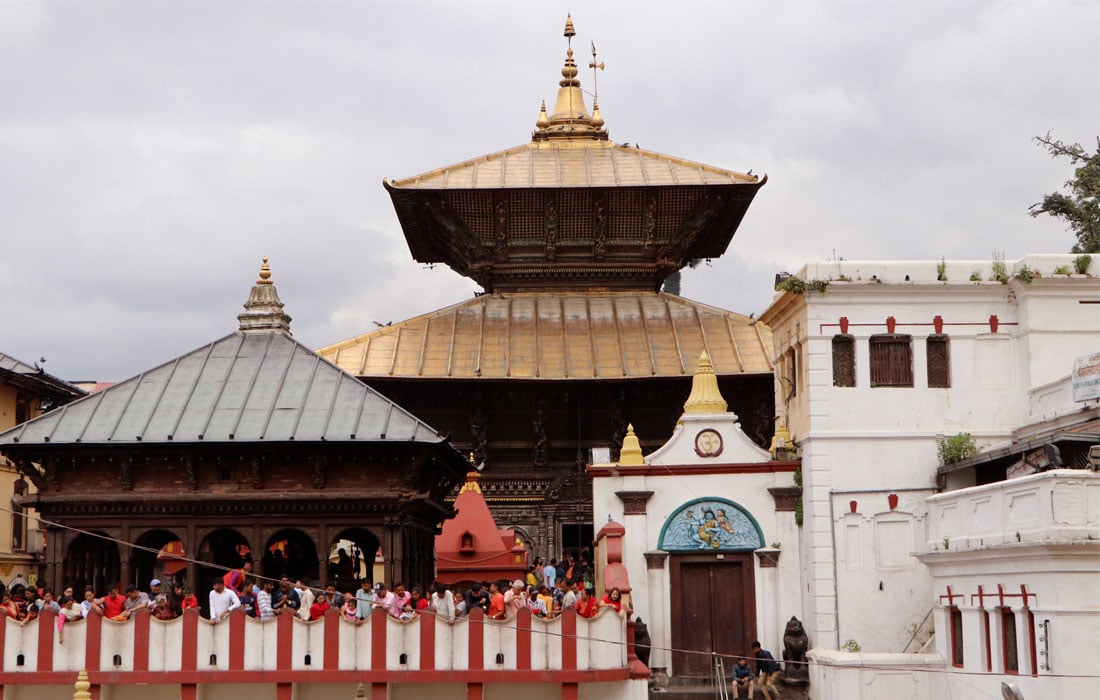Pashupatinath Temple: Spiritual Gem of Kathmandu, Nepal

If you are planning a visit to Kathmandu, Nepal, you cannot miss out on exploring the spiritual gem of the city - the Pashupatinath Temple. This ancient and sacred Hindu temple is not only a remarkable architectural wonder but also holds great significance in the cultural landscape of Nepal.
Overview of the Pashupatinath Temple
The Pashupatinath Temple, dedicated to Lord Shiva, is located on the banks of the Bagmati River in Kathmandu. Its stunning pagoda-style architecture and intricate wood carvings make it a masterpiece of ancient Nepali art. The temple complex spreads over a vast area and is home to numerous other smaller temples, ashrams, and statues, creating a harmonious spiritual atmosphere.
The main shrine of the Pashupatinath Temple is believed to have existed for more than 2,000 years, making it one of the oldest Hindu temples in Nepal. Thousands of devotees flock to the temple yearly, especially during the Maha Shivaratri festival, to offer prayers and seek blessings from Lord Shiva.
Significance and cultural importance of the temple
The Pashupatinath Temple holds immense cultural and religious importance for the Nepali people. It is considered one of the most sacred Hindu temples in the world and holds a place on the UNESCO World Heritage list. The temple is a place of worship and a symbol of Nepal's rich heritage and devotion to Lord Shiva.
Visiting the Pashupatinath Temple offers a unique opportunity to witness Hindu rituals, ceremonies, and cremations being performed along the banks of the Bagmati River. The sight of holy men, known as Sadhus, adorned in vibrant clothes and ashes, meditating within the temple premises adds to the mystical aura of this spiritual destination.
Whether you are a spiritual seeker or a curious traveller, a visit to the Pashupatinath Temple is an experience that will leave a lasting impression. The tranquil ambience, stunning architecture, and cultural significance make it a must-visit destination in Kathmandu, Nepal.
History and Architecture
Welcome to the spiritual gem of Kathmandu, Nepal - the Pashupatinath Temple! This sacred site holds significant historical and architectural value, attracting devotees and tourists worldwide.
Ancient history and origins of the Pashupatinath Temple
Dating back to the 5th century, the Pashupatinath Temple is believed to have been built by a King named Prachanda Dev. It is dedicated to Lord Pashupatinath, a form of Lord Shiva, who is revered as the patron deity of Nepal. The temple holds immense importance in Hindu mythology and is considered one of the holiest sites in the world.
According to ancient texts, it is said that Lord Shiva himself resided on the banks of the Bagmati River, where the temple is located. The temple complex also includes other smaller shrines, cremation ghats, and sacred lingams, creating a palpable spiritual atmosphere.
Architectural features and style of the temple
The Pashupatinath Temple showcases a blend of traditional Nepali and pagoda-style architecture. The intricately carved wooden rafters, silver doors, and gilded roof add to its grandeur. The golden pinnacle of the temple, known as the "shikara," stands tall as a symbol of religious significance.
The main temple is built on a raised platform and faces the sacred Bagmati River. Surrounding the temple, there are a total of 518 smaller temples, each dedicated to different deities. The complex also includes a monastery, museums, and meditation and yoga centres.
Visiting the Pashupatinath Temple is not just about admiring the architectural beauty; it offers a unique spiritual experience. The blend of ancient history, religious devotion, and stunning architecture makes this temple a must-visit destination for anyone seeking solace and enlightenment.
So, if you find yourself in Kathmandu, make sure to pay a visit to the Pashupatinath Temple and immerse yourself in its rich history and divine aura.

Religious Beliefs and Practices
Are you planning a trip to Kathmandu? If so, make sure you don't miss out on experiencing the spiritual gem of the city - the Pashupatinath Temple. A sacred Hindu temple dedicated to Lord Pashupatinath, this centuries-old temple holds immense religious significance for the people of Nepal and the Hindu community worldwide.
Beliefs and myths associated with Lord Pashupatinath
-
Lord of the animals: Lord Pashupatinath is worshipped as the Lord of all living beings, especially animals. It is believed that offering prayers at this temple can bring blessings and protection for humans and animals.
-
Reincarnation: According to Hindu beliefs, Lord Pashupatinath resides in the form of a sacred stone known as the "linga." It is believed that when a highly spiritual person dies, their soul enters the stone and achieves liberation, becoming one with Lord Pashupatinath.
Rituals, festivals, and ceremonies at the temple
-
Prayers and offerings: Devotees visit the Pashupatinath Temple to offer prayers, flowers, incense, and holy water to Lord Pashupatinath. These daily rituals are essential for spiritual purification and seeking blessings.
-
Maha Shivaratri: Maha Shivaratri is the most significant festival celebrated at Pashupatinath Temple. Thousands of devotees gather at the temple to worship Lord Pashupatinath throughout the night, chanting prayers and singing hymns. Observing fasting and night-long vigil during Maha Shivaratri is believed to bring luck and fulfil wishes.
-
Other ceremonies: The temple hosts various ceremonies, including weddings, baby-naming ceremonies, and funerals. These ceremonies are conducted according to Hindu rituals, and the temple premises provide a serene and sacred atmosphere for such occasions.
Visiting the Pashupatinath Temple offers a unique spiritual experience and an opportunity to immerse yourself in Nepalese culture and traditions. Remember to respect the rules and customs of the temple and enjoy this religious site's serene ambience.

Attractions and Sacred Places
The main deity: Lord Pashupatinath
Welcome to Pashupatinath Temple, a spiritual gem nestled in the vibrant city of Kathmandu, Nepal. Dedicated to Lord Pashupatinath, an incarnation of Lord Shiva, this ancient temple holds immense religious significance and is a major pilgrimage site for Hindus worldwide.
The main deity, Lord Pashupatinath, is worshipped as the Lord of all living beings. Devotees believe that by offering prayers and performing rituals at this sacred site, they can attain spiritual blessings, peace, and prosperity in their lives. The temple's unique architectural design, intricate carvings, and peaceful surroundings create a serene atmosphere perfect for meditation and introspection.
Other notable attractions within the temple complex
Apart from the main temple dedicated to Lord Pashupatinath, the temple complex offers several other attractions that are worth exploring during your visit:
-
Deodi: This is the entrance gate to the temple complex, adorned with beautiful sculptures and carvings depicting various mythological stories.
-
Basuki Nath Temple: Located within the temple complex, this smaller shrine is dedicated to the Snake God, Basuki Nath. Many devotees offer prayers here to seek protection from snakes and gain fertility and prosperity.
-
Shleshmantak Forest: This serene forest area surrounding the temple is a designated wildlife sanctuary. It is home to various species of animals and birds, offering visitors a peaceful retreat amidst nature.
Whether you are a devout Hindu or simply seeking spiritual solace, visiting Pashupatinath Temple will leave a lasting impression on your mind and soul. Immerse yourself in the vibrant religious atmosphere, witness the devout rituals of the worshippers, and feel the divine energy that permeates every corner of this sacred site.

Visitor Experience
Are you planning a trip to Kathmandu, Nepal? If so, don't miss the opportunity to visit the Pashupatinath Temple, often called Kathmandu's spiritual gem. This sacred Hindu temple attracts thousands of pilgrims and tourists annually, offering a unique and unforgettable experience.
Guidelines and tips for visiting the Pashupatinath Temple
Here are some important guidelines and tips to make the most of your visit to the Pashupatinath Temple:
-
Respect the customs: As a place of worship, it is crucial to respect the customs and traditions of the temple. Dress modestly, remove your shoes before entering, and be mindful of your behaviour.
-
Explore the architecture: The temple complex is a masterpiece of Nepalese architecture, with intricate carvings and stunning pagodas. Take your time to explore the beauty and tranquillity of the surroundings.
-
Attend a ritual: Witnessing a religious ritual at the Pashupatinath Temple is a truly mesmerizing experience. Join the devotees in their prayers and observe the vibrant ceremonies.
-
Embrace the spiritual atmosphere: The temple's serene ambience and the devotion of the worshippers create a deeply spiritual atmosphere. Take a moment to soak in the positive energy and find inner peace.
Stories and experiences shared by pilgrims and tourists
Many pilgrims and tourists have shared their profound experiences at the Pashupatinath Temple. Some have witnessed miraculous events, while others have deeply connected with the divine. Everyone leaves with a unique story, but the overall sentiment is awe and spiritual fulfilment.
Visiting the Pashupatinath Temple is not only an opportunity to explore the rich Hindu culture but also a chance to connect with something greater than ourselves. It is a place where faith, devotion, and spirituality converge, leaving visitors with inner peace and enlightenment.
So, if you're seeking a spiritual journey in Kathmandu, include the Pashupatinath Temple in your itinerary.

Preservation and Conservation Efforts
Efforts taken to preserve and protect the temple
If you visit the sacred Pashupatinath Temple in Kathmandu, Nepal, you can be assured that the temple is being actively preserved and protected. The temple's management committee, along with the government and various organizations, has implemented several measures to ensure the conservation of this spiritual gem.
One of the main efforts is strictly enforcing rules and regulations within the temple complex. Visitors must follow a code of conduct prohibiting littering, vandalism, and disrespectful behaviour. This helps in maintaining the cleanliness and sanctity of the temple grounds.
Regular maintenance and renovation work are also carried out to preserve the architectural integrity of the temple. Special consideration is given to preserving the intricate wood carvings, sculptures, and other historical features adorn the temple.
Role of organizations and Authorities in maintaining the Temple
Preserving the Pashupatinath Temple is a collective effort involving various organizations and authorities. The Pashupati Area Development Trust (PADT) plays a crucial role in managing and maintaining the temple complex. They oversee day-to-day operations, implement conservation projects, and coordinate with different stakeholders.
Through the Department of Archaeology, the government of Nepal provides support and assistance in preserving the temple's cultural heritage. They work closely with the PADT and other organizations to ensure proper conservation practices are followed.
Various international organizations and donors have also contributed to the temple's preservation through funding and expertise. Their involvement has helped in the implementation of restoration projects and the training of local artisans in traditional craftsmanship.
The combined efforts of these organizations and authorities have ensured that the Pashupatinath Temple remains a spiritual and cultural treasure for generations to come.

Nearby Places of Interest
Exploration of other nearby attractions in Kathmandu
When you visit the Pashupatinath Temple, don't miss out on exploring the other fascinating attractions in Kathmandu. Here are a few suggestions to make your trip even more memorable:
-
Boudhanath Stupa: Located just a short distance from Pashupatinath Temple, this UNESCO World Heritage Site is one of the largest Buddhist stupas in the world. Take a stroll around the stupa, soak in the serene atmosphere, and witness the rituals performed by locals.
-
Swayambhunath Stupa: Also known as the Monkey Temple, Swayambhunath is another renowned religious site in Kathmandu. Situated on a hilltop, it offers a breathtaking view of the city and is adorned with colourful prayer flags and intricate Buddhist artwork.
-
Kathmandu Durbar Square: Step back in time as you explore the ancient palaces, temples, and courtyards of Kathmandu Durbar Square. Marvel at the intricate wood carvings, pagoda-style architecture, and the historic Hanuman Dhoka Palace.
Relevant information for planning a complete pilgrimage
Whether you are a spiritual seeker or simply curious about the rich cultural heritage of Nepal, the Pashupatinath Temple is a must-visit destination. Here are a few key details to help plan your pilgrimage:
-
Opening Hours: The temple is open from 4:00 AM to 12:00 PM and from 5:00 PM to 9:00 PM. Take note that the main temple is accessible only to Hindus.
-
Dress Code: As a place of worship, modest and respectful attire is required. Both men and women should cover their shoulders and wear clothing below the knee.
-
Cultural Etiquette: Remember the local customs and traditions while visiting the temple. Avoid touching the sacred objects, observe silence, and follow the guidance of the temple priests.
-
Guided Tours: If you want to learn more about the temple's history and significance, consider joining a guided tour. Knowledgeable guides can provide valuable insights and enhance your overall experience.
Remember, a visit to the Pashupatinath Temple is not just a sightseeing trip but an opportunity to immerse yourself in the spiritual essence of Nepal. Embrace the tranquillity, seek blessings, and cherish the memories of this sacred gem in the heart of Kathmandu.
